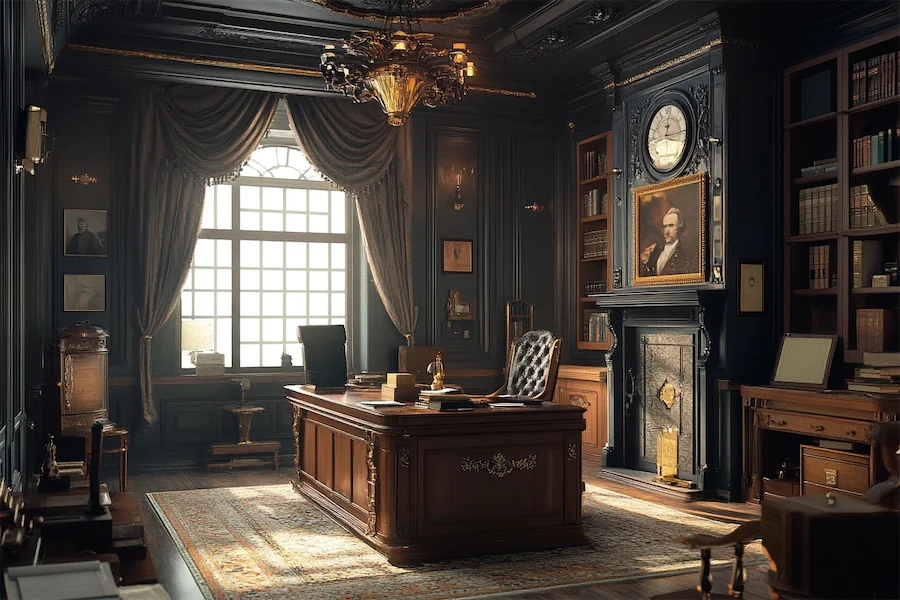Victorian office rooms exude timeless elegance, characterized by ornate details, rich textures, and a sense of grandeur. This article explores their origins, key features, applications, considerations for selection, and their relevance in contemporary design.
Introduction to Victorian Office Rooms
Victorian office rooms draw inspiration from the design aesthetics prevalent during Queen Victoria’s reign (1837–1901). Known for their opulence and attention to detail, these spaces often feature intricate woodwork, luxurious fabrics, and antique furnishings, creating a sophisticated and formal atmosphere.
History and Origins of Victorian Office Rooms
The Victorian era was marked by industrial progress and a fascination with ornate design. Interior spaces, including offices, showcased elaborate decorations, dark polished woods, and a mix of stylistic influences, reflecting the eclecticism of the period. This era’s design ethos emphasized grandeur and meticulous craftsmanship, aiming to convey status and refinement.
Key Features of Victorian Office Rooms
- Ornate Woodwork: Utilization of rich, dark woods like mahogany or walnut, often with intricate carvings and detailing.
- Antique Furniture: Inclusion of period-appropriate pieces such as roll-top desks, leather-upholstered chairs, and substantial bookcases.
- Luxurious Fabrics: Use of heavy draperies, velvet upholstery, and patterned wallpapers to add texture and depth.
- Decorative Accessories: Incorporation of brass desk lamps, ornate rugs, and framed artworks to enhance the room’s opulence.
- Fireplaces: Feature of a central fireplace with a decorative mantel, serving as a focal point in the room.
Applications of Victorian Office Rooms
Victorian design can be applied to various office settings:
- Home Offices: Creating a refined and inspiring workspace within a residence.
- Law Firms and Professional Services: Establishing an environment that conveys tradition, stability, and professionalism.
- Libraries and Study Rooms: Designing spaces that encourage focus and intellectual engagement.
Considerations When Choosing Victorian Office Rooms
When designing or selecting a Victorian office room, consider the following:
- Authenticity: Incorporate genuine antiques or high-quality reproductions to maintain historical accuracy.
- Space Planning: Arrange furniture to promote functionality while adhering to the room’s formal aesthetic.
- Lighting: Utilize period-appropriate lighting fixtures that provide adequate illumination and complement the Victorian theme.
- Color Scheme: Opt for rich, deep colors such as burgundy, forest green, or navy to enhance the room’s warmth and elegance.
- Maintenance: Be prepared for the upkeep of natural wood surfaces and antique furnishings to preserve their appearance.
Conclusion
Victorian office rooms offer a blend of historical charm and sophisticated design, creating spaces that are both elegant and functional. By understanding their key features and thoughtful application, one can design an office that reflects the timeless appeal of Victorian aesthetics while accommodating contemporary needs.
